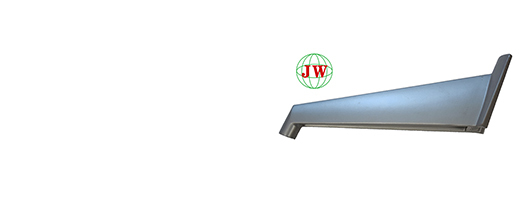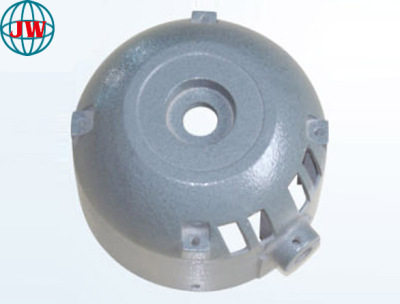
How to ensure that the surface treatment of furniture components meets your requirements?
2025-07-01 15:30
How to ensure that the surface treatment of furniture components meets your requirements?
In the realm of furniture manufacturing, the surface treatment of components is not merely an aesthetic choice but a crucial factor that impacts durability, functionality, and user experience. Whether it's aluminum die-cast furniture connectors, wooden legs, or metal frames, ensuring that the surface treatment aligns with specific requirements demands a systematic approach. From material selection to quality control, here’s how we guarantee that every furniture component leaves our facility with a flawless and fit-for-purpose finish.
Understanding Your Surface Treatment Needs
The first step in meeting your requirements is to gain a comprehensive understanding of your needs. We engage in detailed consultations to clarify aspects such as:
Aesthetic Preferences: Whether you desire a matte black powder coat, a brushed aluminum look, or a high-gloss finish, we discuss color codes (e.g., RAL or PMS), textures, and visual effects.
Functional Demands: For outdoor furniture, corrosion resistance becomes paramount, while for high-touch surfaces like handrails, scratch resistance and anti-microbial properties are key. We identify the environmental conditions and usage scenarios to select the most appropriate treatment.
Industry Standards: Different sectors have specific requirements. For example, contract furniture may need to meet fire safety regulations, and healthcare furniture must adhere to strict hygiene standards. We ensure that all treatments comply with relevant international norms.
Material Compatibility and Preparation
The success of surface treatment hinges on the compatibility between the material and the treatment method. For aluminum die-cast furniture components, we start with a meticulous pre-treatment process:
Cleaning: Components are degreased and cleaned using alkaline solutions to remove contaminants, ensuring proper adhesion of the subsequent treatment layers.
Etching or Conversion Coating: For aluminum, a conversion coating (such as chromate-free chemical treatment) is applied to create a micro-rough surface that enhances the bond with paint or powder coating. This step is crucial for preventing peeling or flaking over time.
Inspection: After pre-treatment, each component undergoes a visual and tactile inspection to confirm its readiness for the next stage.
Advanced Surface Treatment Technologies
We employ a range of cutting-edge technologies to achieve optimal results:
Powder Coating: A popular choice for its durability and versatility, powder coating involves applying dry powder particles electrostatically and then curing them under heat. This method provides a thick, uniform layer with excellent corrosion, abrasion, and chemical resistance. We offer a wide variety of colors and textures, from smooth finishes to textured patterns for added grip.
Anodizing: Ideal for aluminum components, anodizing creates a protective oxide layer on the surface. This not only enhances corrosion resistance but also allows for coloration through dyeing or electrolytic coloring. Anodized surfaces are hard-wearing and can withstand daily use, making them suitable for furniture exposed to frequent contact.
Electroplating: For a luxurious or functional finish, electroplating deposits a thin layer of metal (such as zinc, nickel, or chrome) onto the component. Chrome plating, for example, provides a shiny, reflective surface with excellent corrosion resistance, while zinc plating offers cost-effective protection for ferrous metals.
Wood Finishing: For wooden furniture components, we use techniques like spray painting, staining, and lacquering. These processes enhance the natural beauty of the wood while providing protection against moisture, UV rays, and wear.
Rigorous Quality Control
To ensure that the surface treatment meets the highest standards, we implement a multi-stage quality control process:
In-Process Checks: During the treatment process, technicians regularly monitor parameters such as temperature, coating thickness, and curing time. Any deviations are immediately corrected to prevent defects.
Post-Treatment Inspection: After the treatment is complete, each component is thoroughly inspected for:
Adhesion: Using cross-hatch or tape tests to ensure the coating adheres firmly to the surface.
Thickness: Measuring the coating thickness with non-destructive instruments to confirm it falls within the specified range.
Surface Defects: Checking for imperfections such as bubbles, scratches, or uneven coverage.
Performance Testing: For critical applications, components undergo additional performance tests, including:
Salt Spray Testing: To assess corrosion resistance, components are exposed to a salt mist environment for a specified period (e.g., 500 hours) and then inspected for rust or degradation.
Abrasion Testing: Simulating wear and tear to evaluate the durability of the surface treatment.
Customization and Flexibility
We understand that every project is unique, and our approach to surface treatment reflects this. Whether you require a custom color match, a specialized texture, or a combination of treatment methods, our team of experts is equipped to deliver. We also offer sample production before full-scale manufacturing, allowing you to review and approve the surface treatment quality in person.
In conclusion, ensuring that the surface treatment of furniture components meets your requirements is a collaborative effort that combines technical expertise, advanced technologies, and stringent quality control. By working closely with you at every stage, from understanding your needs to delivering the final product, we guarantee furniture components that not only look great but also perform exceptionally over time.
Get the latest price? We'll respond as soon as possible(within 12 hours)












